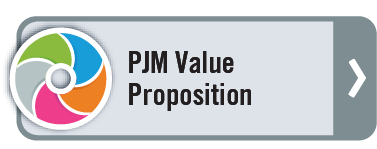Benefits of PJM Membership
History
PJM began in 1927 when three utilities, realizing the benefits and efficiencies possible by sharing their generating resources, formed the world’s first continuing power pool. These utilities connected to each other through high voltage transmission lines, creating an interconnection of resources. Interconnection is like a two-way street allowing those who are connected to the grid to share resources back and forth as needed.
Benefits
Today PJM members share the benefits of power pooling and wholesale electricity markets (that allow them to sell each other power when they need it) because of the interconnected grid. They also have a seat at the table to discuss PJM and industry matters through PJM’s stakeholder process.
Power pooling provides PJM members the benefit of drawing from electricity resources across a broad geographic area. This means that if one area is short on resources, resources can be brought in from a different area, even miles away, to ensure grid reliability.
In addition, the large size of PJM’s market area increases the diversity of resources available to meet consumer need, providing benefits to both market participants and consumers and enhancing the reliability of the grid. By providing open and fair access to the grid for buyers and sellers of all kinds, PJM assures that the competitive market delivers the lowest-cost power available to meet customer demand at any given time.
PJM also serves as an independent and trusted source of information for stakeholders, regulators and market participants. PJM members participate in PJM’s stakeholder process, which provides a forum for those who have a stake in the wholesale electric industry to discuss and work through issues related to PJM markets, operations, public policies and current and future industry matters. Stakeholders who are not members are invited to participate in stakeholder meetings to foster collaboration between members, government organizations, advocates and the general public.
Grids in North America
Many local grids are interconnected for reliability and commercial purposes, forming larger, more dependable networks across states to maximize coordination and planning. The North American Electric Reliability Corporation was established to ensure that the grid in North America is reliable, adequate and secure.
Other regional organizations that extend across many states – PJM is one of them – are referred to as independent system operators and regional transmission organizations.
